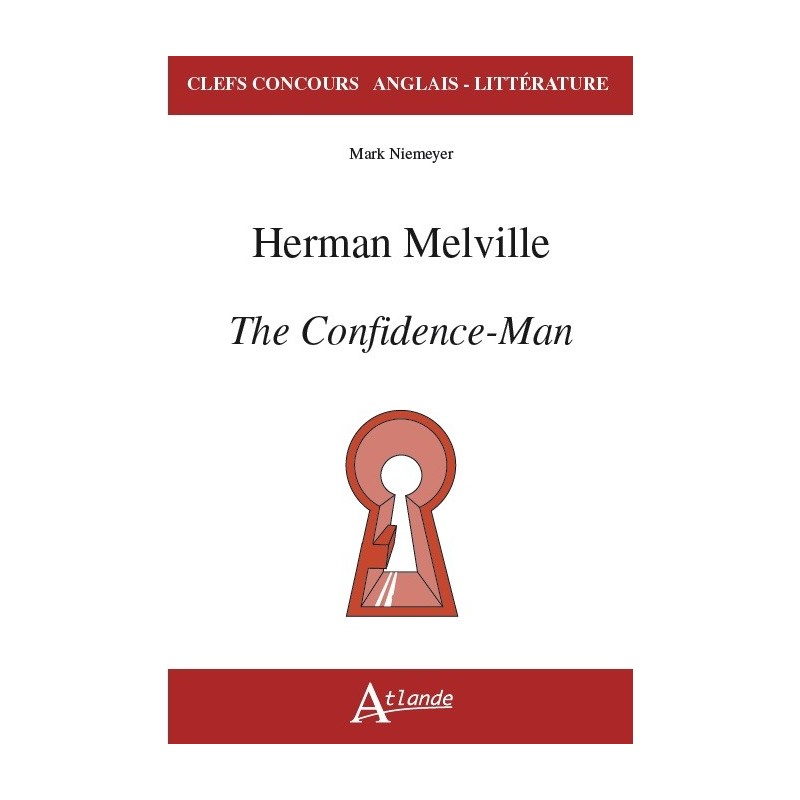




Mark Niemeyer
 Livraison en lettre suivie
Livraison en lettre suivie
France met. & monde : 3€ jusqu'à 25€, 6€ jusqu'à 50€, 9€ jusqu'à 100€, 12€ au-delà 100€ DOM-TOM : 8€
Traitant d’un des sujets 2019 et 2020 des agrégations externe et interne d’Anglais, cet ouvrage propose tout ce dont le candidat a besoin pour passer les épreuves.
Comme tous les clefs-concours de littérature anglophone, l’ouvrage est structuré en quatre parties :
Repères : le contexte historique et littéraire.
Thématiques : comprendre les enjeux du programme.
Ouvertures : pistes de réflexion personnelle.
Outils : pour retrouver rapidement une définition, une idée ou une référence.
Fiche technique
Introduction 17
The Confidence-Man in Context
America in the 1850s 27
Melville in the 1850s 37
The Origin of the Term “Confidence Man” 45
Themes and Analyses
Religion, the Bible and
the Question of the Practicality of Christianity 51
Devil Imagery and Shape-Shifting 61
“All the world’s a stage” 73
The Confidence-Man as Roman à Clef 85
Genre, Metafiction and Style 97
Stories-within-the-Story 113
Beyond The Confidence-Man
Subsequent Works and Melville’s Move towards Poetry 121
The Confidence Man as
Nineteenth-Century American Phenomenon 127
Appendices
The Avatars of the Confidence Man 145
Chapter Synopses 149
Chronology 167
Bibliography 181
Mark Niemeyer est professeur de littérature et d’histoire américaine à l’université de Dijon; il a notamment édité Confidence-Man dans la Pléiade. Il a effectué des recherches sur les écrits du 19ème de la période antebellum et il s'intéresse souvent aux questions de nationalisme culturel et d'identité nationale.
Early readers of Melville’s last published prose work were, in fact, similarly lost. While a few contemporary reviewers of The Confidence-Man (notably English, rather than American ones) were able to make some sense out of the book, even comprehend certain aspects of Melville’s plotting devices and satirical intentions, many were not. Several regretted that the author had not offered the public a more realistic narrative in the style of some of his earlier works; others offered severe criticism of a book they simply could not understand. The Albany Evening Journal, for example, remarked, justifiable enough, that the book recounts “a story in which the incidents and characters are chosen with a view to convey a theoretical moral, not a vivid, graphic delineation based upon real life, like ‘Typee’ and ‘Omoo’” (Higgins and Parker, p. 487).